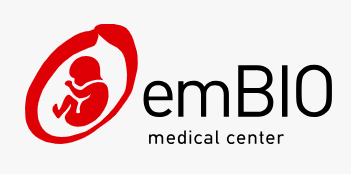Press Release
Glory Star expected to further increase profitability
Glory Star New Media Group, a Nasdaq-listed digital media platform and content-driven e-commerce company in China, is expected to be able to further increase its profitability with its growing market share and economy of scale.
The company reported a 15.8% growth in its Non-GAAP net income to US$16.9 million for the six-months ended June 30 from US$14.6 million in the same period of last year.
During the first half of this year, the company’s total revenues grew 144.6% to US$71.9 million from US$29.4 million, thanks to the increase in advertising revenues and Cheers e-Mall marketplace service revenue, primarily attributable to the development and promotion of its mobile and online businesses.
Income from operations surged 40.9% to US$16.2 million from US$11.5 million.
During the first half year of 2021, the company successfully grew its top and bottom lines as it allocated more resources to sales and marketing to augment its brand equity and fuel its long-term growth engine.
The company’s rising economy of scale will allow it to gradually reduce operating expenses and capitalize on the rising popularity of video content and deliver lasting shareholder value.
At the end of June 30, the number of downloads of the company’s Cheers App reached 215.6 million, up from 121 million a year earlier. The increase in the number, a key indicator of the attractiveness and usability of its Cheers App and its e-Mall platform traffic, showed that it had successfully converted viewers of its content to its Cheers App.
Average daily active users (DAUs) of the app grew to 7.1 million from 4.5 million for the same period. Stock Keeping Units (SKUs) on its Cheers e-Mall platform jumped to 231,630 from 19,984.
Gross Merchandise Value (GMV) of the Cheers App reached US$181.2 million in the first six months of this year, compared with US$20 million in the same period of 2020. The increase in GMV was driven significantly by its ability to attract and retain users to its Cheers App through its professionally produced content and its ability to further enhance its product offerings.
The company has a strong commitment to its corporate mission, meticulous execution of growth strategies, methodical expansion in both overseas and domestic markets, proactive engagement of Generation Z users through innovative products, and prudent investment in sales and marketing initiatives. It plans to refine its competitive edge in content-driven e-commerce of premium lifestyle, deepen our expertise in integrating quality content with lifestyle commerce, and expand our brand influence among Generation Z consumers on a global basis.
During the first half year, the resurgence of Covid-19 and its Delta variant caused the Chinese government to impose travel restrictions within mainland China, particularly in the southern regions of the country.
The company temporarily suspended the production of its traditional “Cheers Series” TV programs, thus resulting in a decline in its cost of revenues during the first six month of 2021. Once the travel restrictions are eased, the company will resume its content production activities in the second half of this year.
As of June 30, 2021, the company had cash and cash equivalents of US$20.3 million, compared with US$17.7 million at the end of last year.
Blockchain and AI technologies
Since its establishment in 2016, Glory Star has pioneered a unique, new business model integrating e-commerce services with premium video content. With the use of blockchain and AI technologies in its systems, the company has become a leading online digital media and entertainment company in China, with a strong track record both in terms of viewership and production capabilities. The company launched its Cheers App in 2018 to integrate e-commerce services with professionally generated content (PGC).
During the first half, the company produced many more live streaming shows and started to provide title sponsor advertising services at a higher price point. It also spent substantially on the development of the Cheers Chat and Cheers Car.
The company plans to provide more user-generated content (UGC) by forming partnerships with other platforms. It will allow global users to upload their content to its video platforms in the fourth quarter of this year while users will receive advertising revenue or get rewards from viewers directly.
The company will also allow content providers to use its software-as-a-service (SaaS) supply chain system with the blockchain technology that will help them match with relevant merchandisers. Content providers will be able to share the revenue from the sales of products on their video accounts.
The company’s ability to integrate premium lifestyle content, including short videos, online variety shows, online dramas, live streaming, its Cheers lifestyle video series, e-Mall, and mobile app, along with innovative e-commerce offerings on its platform enables it to pursue its mission of enriching people’s lives.
Its large and active user base has created valuable engagement opportunities with consumers and enhanced platform stickiness with thousands of domestic and international brands.
Non-fungible token
Glory Star’s Naschain platform offers one-stop solutions, which include smart contract, multichain universe and cross-chain consensus mechanisms, to users with its blockchain technology. It can help e-shoppers trace the origins of the products, avoid buying counterfeit goods, lower their logistics costs and protect their privacy.
The company has signed an agreement with the Beijing Minsheng Art Museum to use the company’s non-fungible token (NFT) technology, which can be used in copy-rights’ registration, verification, transaction and valuation, to protect the intellectual property of the museum’s artworks. The company will be able to boost its market share by acquiring some NFT service providers.
About Author
Disclaimer: The views, suggestions, and opinions expressed here are the sole responsibility of the experts. No Digi Observer journalist was involved in the writing and production of this article.
Press Release
Matevara Wellness Launches Its New Product for Focus and Memory, Targeting the Wired-But-Tired Modern Lifestyle

Dover, DE, United States, 24th Dec 2025 – Matevara Wellness has announced the launch of its new product for Focus & Memory, a new addition to its expanding Brain Health portfolio designed to support mental clarity, memory, and cognitive balance for modern women. As part of Matevara’s broader Targeted Health Support ecosystem, which includes solutions for Brain Health, Sleep & Relaxation, and Women’s Health, the brand also offers complementary formulations such as Slumbra. Matevara’s Slumbra Formula specifically targets the “wired-but-tired” phenomenon by providing a valerian and GABA for racing thoughts at night, helping quiet the central nervous system, while its valerian root extract for deep sleep works to extend the duration of REM cycles. Together, these targeted solutions reflect Matevara’s holistic approach to supporting focus by day and restorative recovery at night, without creating a sedated effect.
The brand’s rapidly growing portfolio addresses the most pressing modern health concerns, from sleep deprivation and stress management to metabolic balance and anti-aging skincare, while strictly adhering to a “No Side Effects” philosophy.
At the core of Matevara’s mission is a commitment to purity and efficacy. Unlike many mass-market products that rely on synthetic fillers, Matevara’s formulations are inspired by centuries of healing tradition and validated through rigorous third-party lab testing. This dual approach ensures that every product delivers potent results without compromising safety.
Synergistic Vitality: Advanced Adaptogens for the Modern Woman
Matevara’s therapeutic line leverages the distinct, scientifically-backed pathways of Ashwagandha and Shilajit to address the most pressing concerns in female wellness today.
- Hormonal Harmony & Skin Clarity: Central to the formulation are the ashwagandha benefits for hormonal acne and PCOS support. By modulating the HPA axis to lower systemic cortisol, Ashwagandha helps stabilize the androgen fluctuations that often lead to adult acne and cycle irregularities. This makes it an essential tool for women seeking a natural approach to endocrine balance and clear skin.
- Metabolic Energy & Bone Health: Complementing this, Matevara focuses on the shilajit resin benefits for skin aging and structural integrity. Rich in fulvic acid and over 84 trace minerals, Shilajit acts as a catalyst for mitochondrial energy. Recent clinical insights also highlight the best shilajit for women’s bone density, particularly as a preventative measure against age-related bone loss.
Matevara’s therapeutic line restores health by bridging the gap between restorative rest and hormonal vitality. By pairing a valerian and GABA for racing thoughts at night for deep sleep, Matevara silences mental chatter to ensure high-quality REM recovery. This foundational rest is amplified by targeted adaptogens: ashwagandha benefits for hormonal acne and PCOS provide essential endocrine balance, while shilajit resin benefits for skin aging and women’s bone density safeguard long-term structural health. The result is a high-performance ecosystem that masters stress, stabilizes hormones, and fuels cellular energy.
A Commitment to Customer Trust
Matevara understands that trust is paramount in the wellness industry. “Our goal is to create products that our customers can rely on for a lifetime,” says a spokesperson for the brand. “That is why we offer a 90-day full refund promise. We want our community to experience the benefits of Ayurveda without any apprehensions.”
To celebrate its expanding product line, Matevara is currently offering exclusive perks, including free shipping on all orders and a “40% Off Sitewide” promotion. Customers can also join the rewards program to unlock VIP offers.
For more information or to browse the full catalog, visit https://matevara.com/collections/all-product.
Inquiries can be sent to Brinda, founder of Matevara Wellness, at hello@matevara.com.

About Matevara Wellness
Matevara Wellness is a forward-thinking health brand dedicated to making ancient healing accessible to the modern world. With a focus on high-quality ingredients, transparency, and holistic well-being, Matevara provides solutions for women’s and men’s health, gut health, and overall wellness.
Media Contact
Organization: Matevara Wellness
Contact Person: Brinda, Founder
Website: https://matevara.com
Email: Send Email
Contact Number: +14256108256
City: Dover
State: DE
Country:United States
Release id:39490
Disclaimer: This press release is for informational purposes only and does not constitute medical advice. Individuals should consult qualified healthcare professionals before using any dietary supplement or wellness product.
The post Matevara Wellness Launches Its New Product for Focus and Memory, Targeting the Wired-But-Tired Modern Lifestyle appeared first on King Newswire. This content is provided by a third-party source.. King Newswire makes no warranties or representations in connection with it. King Newswire is a press release distribution agency and does not endorse or verify the claims made in this release. If you have any complaints or copyright concerns related to this article, please contact the company listed in the ‘Media Contact’ section
About Author
Disclaimer: The views, suggestions, and opinions expressed here are the sole responsibility of the experts. No Digi Observer journalist was involved in the writing and production of this article.
Press Release
Duratek Technology Marks a New Addition to Stellar Furniture’s Office Desk Range
Foshan, Guangdong, China, 24th Dec 2025 – In an industry where office desks are often judged by appearance but questioned for long-term performance, Stellar Furniture has introduced a new manufacturing innovation aimed at addressing one of the most persistent concerns in modern workspaces, durability without compromising comfort or design. The company has recently adopted Duratek Technology, a specialized desk-top solution that enhances the overall quality, longevity, and user experience of office desks and tables.

Office furniture buyers, ranging from retailers and wholesalers to project owners and e-commerce sellers, have long sought desk surfaces that can withstand everyday wear, moisture exposure, and extended usage, while still maintaining a refined look. Traditional desks often rely on plastic edge banding, which tends to peel, crack, or become uncomfortable over time. Duratek Technology moves away from this limitation through a seamless, edge-free design that eliminates weak points altogether.
The technology uses high-density MDF boards with curved, moulded edges, creating a smooth and continuous surface. This not only enhances the visual appeal of the desk but also improves ergonomic comfort, especially for professionals who spend long hours working at their desks. The sealed surface ensures moisture resistance, reducing the risk of swelling caused by spills or humidity, an issue commonly reported in standard office furniture.

Another notable aspect of Duratek is its high scratch and thermal resistance. A specialized protective top layer, combined with an additional thermal coating, helps the desk surface retain its finish even under demanding daily use. The layers are bonded using advanced PUR (Polyurethane Reactive) adhesive, known for its long-term strength and resistance to delamination, adding to the overall lifespan of the product.
Industry response to the new addition has been encouraging. Dealers, wholesalers, and project owners sourcing office furniture from Stellar Furniture have reportedly welcomed the innovation, citing improved customer satisfaction and smoother business operations. With reduction in edge damage, surface wear, and moisture issues, many partners have found it easier to build trust with their end customers and close repeat orders.
Commenting on the introduction of Duratek Technology, Mr. Arihant Nahar, CEO at Stellar Furniture shared, “We closely observe how offices are evolving and how expectations from furniture are changing. Customers today want desks that last longer, feel better to use, and maintain their appearance over time. Adding Duratek Technology is a natural step for us, it aligns with market demand and reflects how deeply innovation is embedded in our DNA. We believe that value addition should always translate into real, everyday benefits for the customer.”
Stellar Furniture has built its reputation over the years by consistently upgrading its product offerings rather than following industry shortcuts. This latest development reinforces that approach, positioning the company as a manufacturer that listens to market feedback and responds with practical, well-engineered solutions rather than cosmetic changes.
As office environments continue to evolve, whether in corporate spaces, startups, or home offices, the quality of desks remains a critical yet often overlooked factor. With the introduction of Duratek Technology, Stellar Furniture addresses long-standing concerns around desk durability, comfort, and reliability. More importantly, it sets a new benchmark for manufacturers, signalling a shift toward higher quality standards in office furniture. The move suggests that the conversation around office desks may finally move from questioning durability to expecting it as a given.
Media Contact
Organization: Stellar Furniture
Contact Person: Avil Porwal
Website: https://www.stellarglobal.com/
Email: Send Email
Contact Number: +919109316533
Address:Henan Road, South District of Longcong Industrial Zones,
Address 2: Beijiao Town, Shunde,
City: Foshan
State: Guangdong
Country:China
Release id:39493
The post Duratek Technology Marks a New Addition to Stellar Furniture’s Office Desk Range appeared first on King Newswire. This content is provided by a third-party source.. King Newswire makes no warranties or representations in connection with it. King Newswire is a press release distribution agency and does not endorse or verify the claims made in this release. If you have any complaints or copyright concerns related to this article, please contact the company listed in the ‘Media Contact’ section
About Author
Disclaimer: The views, suggestions, and opinions expressed here are the sole responsibility of the experts. No Digi Observer journalist was involved in the writing and production of this article.
Press Release
EmBIO Announces Ongoing Efforts to Support Emotional Well-Being in Fertility Journeys
Chalandri, Attica, Greece, 24th Dec 2025 — EmBIO Medical Center has announced its continued focus on supporting the emotional well-being of individuals and couples navigating fertility treatment, recognising the significant role psychological factors play throughout the reproductive journey. The announcement reflects EmBIO’s commitment to a comprehensive, patient-centred approach that addresses both the physical and emotional aspects of fertility care.

Scientific evidence increasingly highlights stress as a key factor that can influence fertility outcomes, treatment experience, and overall well-being. Emotional strain, uncertainty, and prolonged treatment timelines are common challenges faced by couples pursuing fertility solutions. In response, EmBIO prioritises structured guidance, transparent communication, and evidence-based support throughout each stage of care.
“At emBIO, strong emphasis is placed on scientifically evidence-based information and comprehensive guidance, so that every couple can move forward with confidence and a sense of security throughout the entire process”, added Dr. Thanos Paraschos. He added that this approach reflects the standards expected from an EmBIO medical center, where clinical excellence is supported by responsible patient care and emotional guidance.
The centre’s approach focuses on preparation, understanding, and emotional reassurance, ensuring patients are supported while navigating different treatment pathways and potential outcomes. By integrating emotional well-being into fertility care protocols, EmBIO aims to reduce anxiety and promote stability throughout the treatment journey.
About EmBIO Fertility Center
EmBIO Medical Center provides comprehensive reproductive solutions, from IVF and egg preservation to advanced genetic screening and expert support for challenging fertility conditions. Dedicated to cutting-edge methods, exceptional care standards, and highly individualised treatment plans, EmBIO is a trusted destination for patients worldwide who are looking for reliable, specialised fertility assistance.
Media Contact
Organization: EmBIO Medical Center
Contact Person: EmBIO Medical Center
Website: https://www.ivf-embryo.gr
Email: Send Email
City: Chalandri
State: Attica
Country:Greece
Release id:39474
Disclaimer: This content is provided for informational purposes only and does not constitute medical advice, diagnosis, or treatment. Individuals should seek guidance from qualified healthcare professionals regarding personal health decisions.
The post EmBIO Announces Ongoing Efforts to Support Emotional Well-Being in Fertility Journeys appeared first on King Newswire. This content is provided by a third-party source.. King Newswire makes no warranties or representations in connection with it. King Newswire is a press release distribution agency and does not endorse or verify the claims made in this release. If you have any complaints or copyright concerns related to this article, please contact the company listed in the ‘Media Contact’ section
About Author
Disclaimer: The views, suggestions, and opinions expressed here are the sole responsibility of the experts. No Digi Observer journalist was involved in the writing and production of this article.
-
Press Release4 days ago
Luis D’Oleo Jr Funnywing Earns National and International Mainstream Media Recognition for Acclaimed Short Film Dreams
-
Press Release7 days ago
Lumirada LTD Concludes 2025 With Strong Global Momentum and Enters 2026 With Strategic Confidence
-
Press Release1 week ago
KeyCrew Media Selects Teddy Abdelmalek as Verified Expert for Student Housing Operations and Property Management Innovation
-
Press Release1 week ago
The Best CBD Retailers Online in Denmark Are Hard to Find – We Found the Top 10
-
Press Release4 days ago
UniOne Global Industry Summit and the First Leadership Training Conference have been successfully concluded
-
Press Release7 days ago
CGTN: China’s high-quality development paves way to prosperity
-
Press Release5 days ago
Regular QuickBooks file optimization a smart investment in the longevity and effectiveness of financial systems
-
Press Release4 days ago
Jonathan Franklin of Georgetown University Highlights How Coverage Itself Shapes Missing Persons Cases



